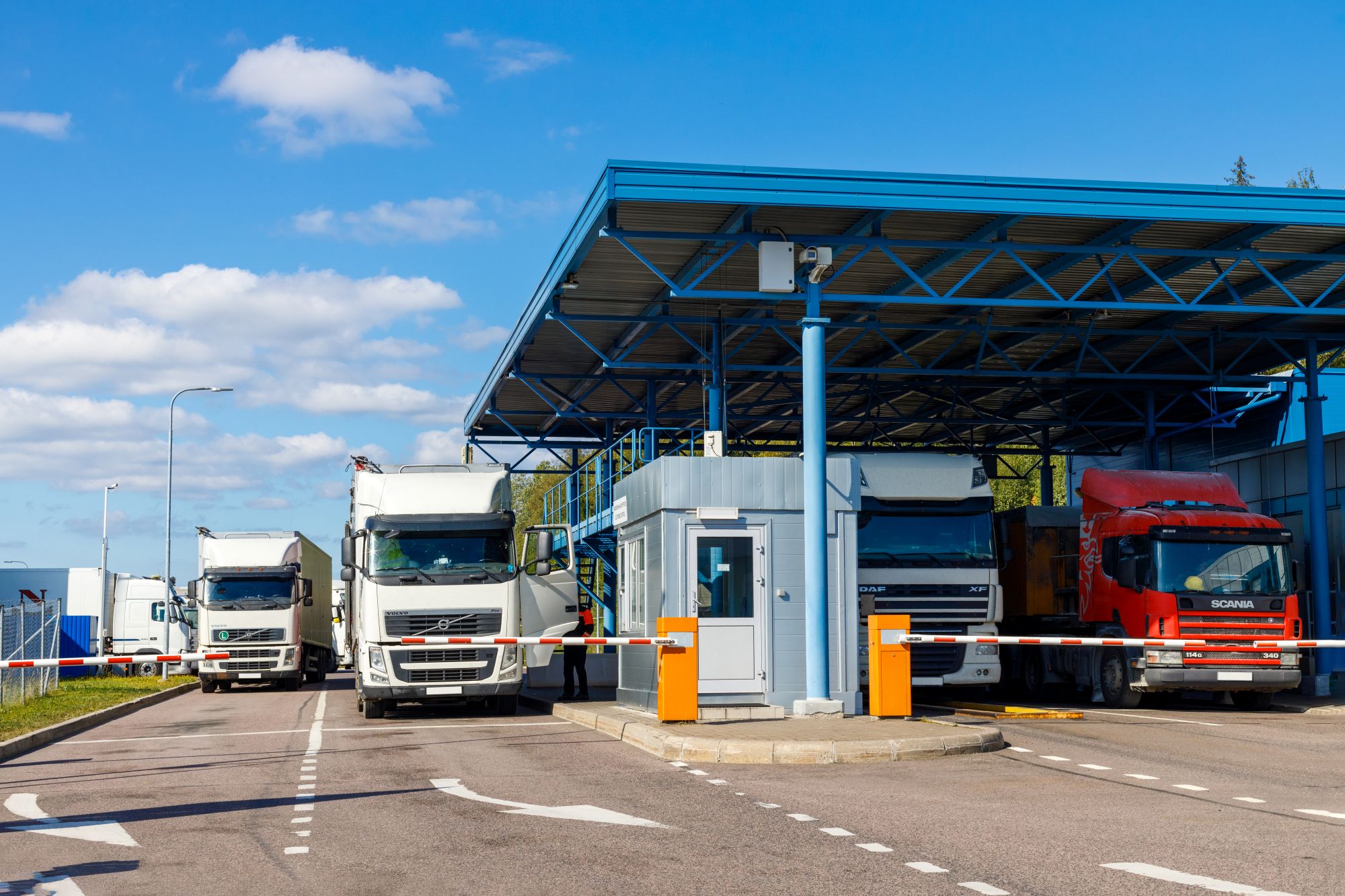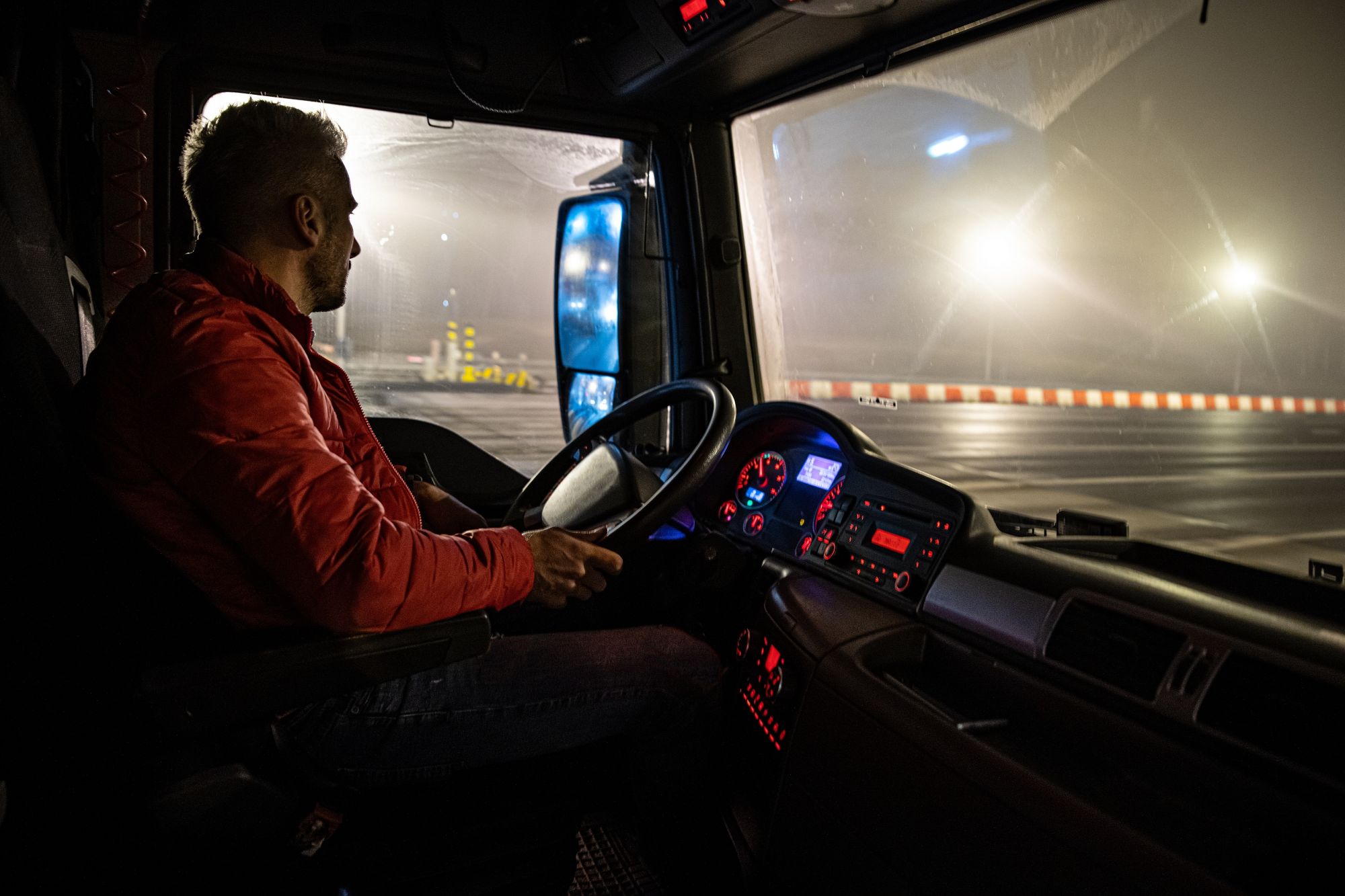
Guest
Pools-Oekraïense grens heropent: Wat wagenparkbeheerders moeten weten
Gemaakt: 18-06-2025
•
Bijgewerkt: 20-06-2025
Na maanden van verstoring is er weer vrij verkeer van goederen tussen Polen en Oekraïne. Maar omdat de spanningen nog steeds sudderen en de dreiging van nieuwe blokkades iedereen bezighoudt, moeten wagenparkbeheerders alert blijven op de risico's - en voorbereid zijn om het welzijn van de chauffeurs aan beide kanten van de grens te beschermen.
In dit artikel wordt uitgelegd wat de oorzaak van de verstoring was, wat de gevolgen waren voor chauffeurs en welke stappen je kunt nemen om de gevolgen te beperken als de vakbondsacties terugkeren.
Wat was de oorzaak van de grensblokkade tussen Polen en Oekraïne in 2024?
De situatie begon eind 2023 toen Poolse vrachtwagenchauffeurs begonnen te protesteren bij belangrijke grensovergangen. Ze beweerden dat het besluit van de EU om de vergunningseisen voor Oekraïense vervoerders af te schaffen - ingevoerd als tijdelijke maatregel in oorlogstijd - leidde tot een toestroom van goedkopere vervoerders die Poolse bedrijven onderboden.
De protesten escaleerden, blokkeerden belangrijke vrachtroutes naar Oekraïne en hielden duizenden voertuigen vast in kilometerslange rijen. Op het hoogtepunt van de blokkade strandden meer dan 5.000 vrachtwagens aan de grens, sommige wachtten meer dan een week om over te steken. Ook niet-Oekraïense EU-chauffeurs hadden te lijden onder lange vertragingen, gespannen dienstregelingen en slechte omstandigheden.
Wat begon als een logistiek geschil groeide uit tot een breder protest van Poolse vrachtwagenchauffeurs over Oekraïense import, markttoegang en de impact van noodmaatregelen van de EU op het gebied van transport. Poolse boeren sloten zich al snel aan, gefrustreerd door het effect van Oekraïense landbouwproducten op de binnenlandse prijzen.
Poolse chauffeurs hadden ook [kritiek op het Oekraïense elektronische wachtrijsysteem] (https://www.pravda.com.ua/eng/news/2023/11/29/7430863/) voor grensovergangen - bekend als eCherha - met het argument dat het vervoerders uit de EU benadeelde. Hoewel het systeem was ontworpen om het vrachtverkeer te stroomlijnen door vervoerders in staat te stellen om vooraf slots voor grensovergangen te reserveren, beweerden Poolse vervoerders dat het Oekraïense bedrijven meer flexibiliteit en snellere toegang gaf. Problemen zoals taalbarrières, beperkte integratie met logistieke systemen in de EU en inconsistente implementatie zorgden ervoor dat veel EU chauffeurs langer aan de grens moesten wachten, wat de perceptie van oneerlijke behandeling verder aanwakkerde en bijdroeg aan de bredere onrust.
Tijdlijn van de grensblokkades tussen Polen en Oekraïne
november 2023: De protesten beginnen bij de grensovergangen Dorohusk, Hrebenne en Korczowa.
December 2023: Meer grensovergangen worden geblokkeerd, waaronder Medyka; drie Oekraïense chauffeurs komen om het leven terwijl ze in de rij staan.
Januari 2024: De Poolse regering komt tot een akkoord om de blokkade te pauzeren tot maart.
Maart-april 2024: Sporadische blokkades worden hervat bij kleinere grensovergangen.
mei 2025: Een nieuwe blokkade van vier maanden begon bij Yahodyn-Dorohusk maar werd door de rechtbank ongedaan gemaakt.
Juni 2025: Alle belangrijke grensovergangen blijven open, maar het risico op toekomstige verstoringen blijft bestaan.
Wat doet de Poolse regering om de situatie te verbeteren?
Als reactie op de verstoring en de bredere implicaties ervan heeft de Poolse regering een proactieve houding aangenomen. Grensovergangen met Oekraïne zijn aangemerkt als kritieke infrastructuur, waardoor ze beter beschermd zijn tegen toekomstige blokkades en de doorstroming van vracht, humanitaire hulp en militaire steun wordt gewaarborgd.
Er is ook een nieuwe raad voor samenwerking met Oekraïne opgericht om de banden tussen de twee landen in het algemeen te versterken. Een deel van de opdracht is om de coördinatie op het gebied van handel en transport te verbeteren. Tegelijkertijd investeert Polen in infrastructuur aan de oostgrens en gaat het in gesprek met EU-functionarissen om aan te dringen op eerlijkere voorwaarden voor Poolse vervoerders. Hoewel deze acties de situatie misschien niet van de ene op de andere dag zullen oplossen, zijn ze een teken van een engagement op langere termijn voor stabiliteit en een gestructureerde dialoog.

De gevolgen voor chauffeurs
De blokkade creëerde onaanvaardbare omstandigheden voor beroepschauffeurs. Velen brachten dagen of weken door in hun cabine zonder toegang tot toiletten, voedsel of stromend water. Sommigen zaten vast in vriestemperaturen zonder verwarming of onderdak.
Drie Oekraïense chauffeurs stierven tijdens de blokkade, waarbij uitputting en onbehandelde medische aandoeningen vermoedelijk hebben bijgedragen.
De verstoring veroorzaakte ook een aanzienlijke mentale en emotionele belasting, vooral voor Oekraïense chauffeurs die in oorlogstijd hun huis probeerden te bereiken of ervan terug te keren. De vertragingen hadden niet alleen gevolgen voor de handel, maar ook voor het vervoer van brandstof, hulpgoederen en militaire goederen die van kritiek belang zijn voor de nationale defensie van Oekraïne.
Terwijl Poolse demonstranten volhielden dat humanitaire en militaire hulpvoertuigen door de grens mochten, geven rapporten van Oekraïense autoriteiten aan dat dit niet altijd het geval was.
Deze omstandigheden waren niet alleen traumatisch voor chauffeurs - ze legden ook hiaten bloot in het risicobeheer van het wagenpark en de noodplanning. Exploitanten moeten grensverstoringen nu behandelen als een voortdurende bedreiging.
Wat wagenparkbeheerders moeten weten
Hoewel de situatie zich heeft gestabiliseerd, blijven de onderliggende spanningen tussen Poolse vervoerders, Oekraïense vervoerders en het EU-beleid onopgelost. Vlootbeheerders die actief zijn in of nabij de regio moeten alert zijn op de mogelijkheid van verdere vakbondsacties - vooral tijdens seizoensgebonden drukpunten of herzieningen van het EU-beleid.
Hier volgen de aanbevelingen van het SNAP-team om de situatie effectief te beheersen:
1. Houd de situatie aan de Pools-Oekraïense grens in de gaten
Blijf op de hoogte van nieuws van Poolse en Oekraïense logistieke verenigingen en overheidsbronnen. Abonneer u op waarschuwingen voor grensverkeer en volg betrouwbare logistieke partners voor realtime updates.
2. Plan flexibele routes
Zorg voor noodplannen die voertuigen omleiden via Hongarije, Slowakije of Roemenië als de grensovergangen tussen Polen en Oekraïne opnieuw geblokkeerd raken.
3. Ondersteun het welzijn van chauffeurs
Zorg ervoor dat je trucks gevuld zijn met essentiële zaken: voedsel, water, powerbanks en medische kits.
Tijdens perioden van onrust is toegang tot beveiligde vrachtwagenparkeerplaatsen in Polen essentieel, zodat je chauffeurs veilig en uitgerust langs de weg staan. Voorzie chauffeurs van actuele informatie over beveiligde vrachtwagenparkeerplaatsen en rustplaatsen langs hun route.
Onze [intruck app] (https://intruckapp.com/) heeft een interactieve kaart van vrachtwagenparkeerplaatsen, met 11.000 aanbieders van vrachtwagendiensten in heel Europa, waaronder Polen, Hongarije en Slowakije. Het is een eenvoudig te gebruiken hulpmiddel voor het vinden van veilige rustplaatsen voor vrachtwagens in Polen, waardoor het vooral waardevol is tijdens perioden van stakingen.
Hoewel de app op dit moment nog geen boekbare vrachtwagenparkeerplaatsen in Oekraïne biedt, kunnen Oekraïense bestuurders en chauffeurs intruck gebruiken om betrouwbare stopplaatsen binnen de EU te vinden tijdens langeafstandsritten of in tijden van verstoring.
4. Boek beveiligde vrachtwagenparkeeroplossingen in Polen
Met een verhoogde vraag tijdens perioden van verstoring is vooraf reserveren van cruciaal belang. Chauffeurs kunnen intruck ook gebruiken om vooraf vertrouwde parkeerplaatsen voor vrachtwagens in Polen te vinden en te reserveren. Of uw voertuigen nu diep in Oost-Europa rijden of terugkeren naar het westen, uw chauffeurs krijgen toegang tot parkeerplaatsen voor vrachtwagens in de buurt van Warschau en andere drukbezochte gebieden.
5. Communiceer regelmatig met chauffeurs
Stel incheckschema's op, vooral als er lange wachttijden of omleidingen worden verwacht. Stel chauffeurs gerust dat hun welzijn prioriteit heeft en bied ondersteuning als ze te maken krijgen met onverwachte vertragingen. Stel indien mogelijk van tevoren veilige parkeerlocaties voor vrachtwagens in Oekraïne voor, zodat ze weten waar ze kunnen pauzeren.
Vooruitblik
De heropening van de grens tussen Polen en Oekraïne is goed nieuws voor vloten die actief zijn in Oost-Europa. Maar met de onopgeloste politieke spanningen is het essentieel om voorbereid te blijven.
"De situatie verandert snel," zegt Nick Renton, hoofd Europese strategie en bedrijfsontwikkeling bij SNAP. "Met de mogelijkheid van verdere verstoring aan de grens tussen Polen en Oekraïne, raden we wagenparkbeheerders aan om robuuste plannen op te stellen om prioriteit te geven aan het welzijn van chauffeurs en operationele risico's te minimaliseren. Dit omvat het inbouwen van flexibiliteit in leveringsschema's, het voorzien van essentiële voorraden in voertuigen en ervoor zorgen dat chauffeurs toegang hebben tot een beveiligde parkeerplaats.
"Ons netwerk van boekbare truckstops in heel Europa en Polen geeft u de middelen om wendbaar te blijven - en biedt gemoedsrust aan zowel bestuurders als chauffeurs wanneer de omstandigheden op de grond onvoorspelbaar worden."
Bekijk onze interactieve kaart van [beveiligde vrachtwagenparkeerplaatsen in Polen vandaag] (https://snapacc.com/map/poland).



